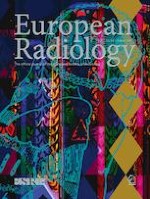Published in:

01-08-2021 | Multiple Myeloma | Oncology
Total diffusion volume in MRI vs. total lesion glycolysis in PET/CT for tumor volume evaluation of multiple myeloma
Authors:
Toshiki Terao, Youichi Machida, Kentaro Narita, Ayumi Kuzume, Rikako Tabata, Takafumi Tsushima, Daisuke Miura, Masami Takeuchi, Ukihide Tateishi, Kosei Matsue
Published in:
European Radiology
|
Issue 8/2021
Login to get access
Abstract
Objective
This study compared the tumor burden and prognostic impact of total diffusion volume (tDV) and total lesion glycolysis (TLG) in the same patients with newly diagnosed multiple myeloma (NDMM) simultaneously. We also examined the relationship between these imaging tumor volumes (TVs) and plasma cell (PC) TV in bone marrow (BM) specimens.
Methods
We retrospectively reviewed the data of 63 patients with newly diagnosed multiple myeloma (NDMM) from April 2016 to March 2018. tDV was calculated from whole-body diffusion-weighted imaging and TLG was calculated from the average standard uptake value and the metabolic tumor volume, respectively. Cellularity of BM hematopoietic tissue and the percentage of BM PCs were used as a reference of PC volume in the BM.
Results
The Spearman correlation coefficient between tDV and TLG was moderate (ɤs = 0.588, p < 0.001) when PET false-negative patients were excluded. There were positive correlations between the BM plasma cell volume (BMPCV) and the imaging TVs (ɤs = 0.505, vs. tDV; and 0.464, vs. TLG). Patients with high tDV and high TLG, as determined by the receiver operating characteristic curve, had worse survival; moreover, patients with both high tDV and high TLG showed the worst prognosis (median progression-free and overall survival: 13.2 and 28.9 months, respectively).
Conclusions
Although tDV and TLG each reflected the total TV, in several cases, tDV and TLG were discrepant due to the biological features of each MM. It is important to use both modalities for complementary assessment of total tumor burden and biological characteristics in MM.
Key Points
• Total diffusion volume (tDV) and total lesion glycolysis (TLG) reflect the total tumor volume and have prognostic value in patients with multiple myeloma (MM).
• tDV and TLG could assess MM from different biological perspectives and should be considered for each patient individually.